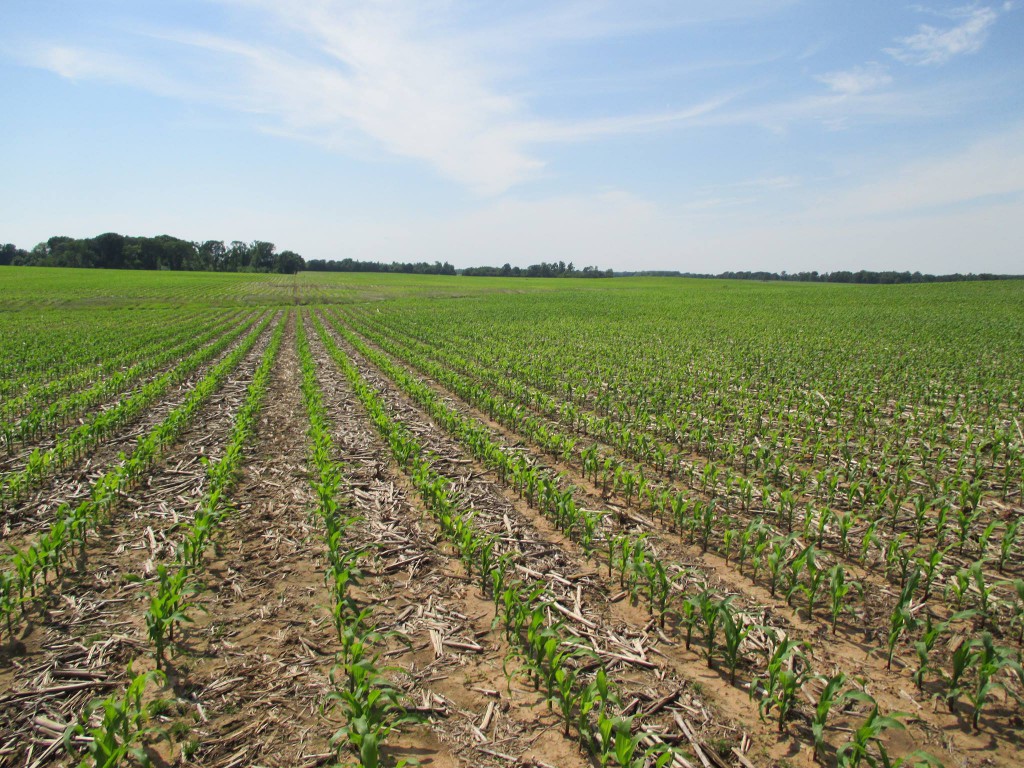By Emily Bedwell, Sarah Beth Thompson, and Wesley Porter
Smarter Irrigation with CropFit
With the recent completion of a new UGA Extension Circular led by Dr. Emily Bedwell (University of Idaho, UGA Ph.D. graduate) located here: More Crop Per Drop: An Introduction to the CropFit App | UGA Cooperative Extension, and the current time of season that we are in for crop production, we felt like this was a good time to talk about the Cropfit App.
The SmartIrrigation CropFit App(CropFit App | SmartIrrigationApps.org)—called CropFit—is a free, user-friendly mobile app designed to help farmers in the southeastern U.S. optimize irrigation for corn, cotton, and soybeans. Starting in 2025, a peanut and sweet corn module was also integrated into the app.
CropFit delivers real-time, crop-specific irrigation scheduling recommendations and is available for iOS and Android devices. In field trials, farmers who used CropFit have observed up to 40% reductions in water use and yield increases of up to 15% compared to traditional calendar-based irrigation methods.

The app uses the well-established FAO-56 approach to estimate how much water a crop uses each day—known as evapotranspiration (ETc)—based on local weather data like temperature, humidity, wind, and solar radiation. It also tracks crop development using accumulated heat units to fine-tune water use estimates over the growing season.
By maintaining a daily soil water balance, CropFit helps growers know when and how much to irrigate. It subtracts ETc from the water available in the root zone and adds rainfall or irrigation, adjusting the soil moisture estimate day by day.
Whether it’s been dry or wet, CropFit helps take the guesswork out of irrigation—improving efficiency and supporting better yields.
Tracking Soil Moisture with CropFit
Each day, CropFit calculates and reports a soil water deficit—essentially how much water is needed to bring the soil back to its optimal moisture level. This value is shown both as a percentage and in inches of water, giving growers an easy-to-understand snapshot of current soil conditions.
For example, after a heavy rain, the soil profile may be fully replenished, and the deficit will read 0%. But if there’s no rain or irrigation over the following days, the crop will continue drawing water from the soil, and the deficit will gradually rise.
According to irrigation best practices, water should typically be applied before the soil water deficit hits 50%. Once it passes that threshold, especially in sandy soils, it becomes harder for plants to access water, increasing the risk of water stress and wilting.
CropFit includes crop-specific soil water deficit thresholds that adjust based on growth stage. For instance, corn is managed with a 40% threshold during early vegetative growth and a more conservative 33% during the reproductive stage when water demand is high. For cotton, those thresholds are 50% and 40%, respectively.

The app also allows users to customize these thresholds, offering flexibility to suit individual management goals or local field conditions. With CropFit, farmers can make better-informed decisions about when to irrigate—protecting yields while conserving water.
Getting Started with CropFit
To download the CropFit app, simply visit the Apple App Store or Google Play Store on your smartphone. Search for “SmartIrrigation CropFit”, then tap Download or Install—it’s free and quick to set up.
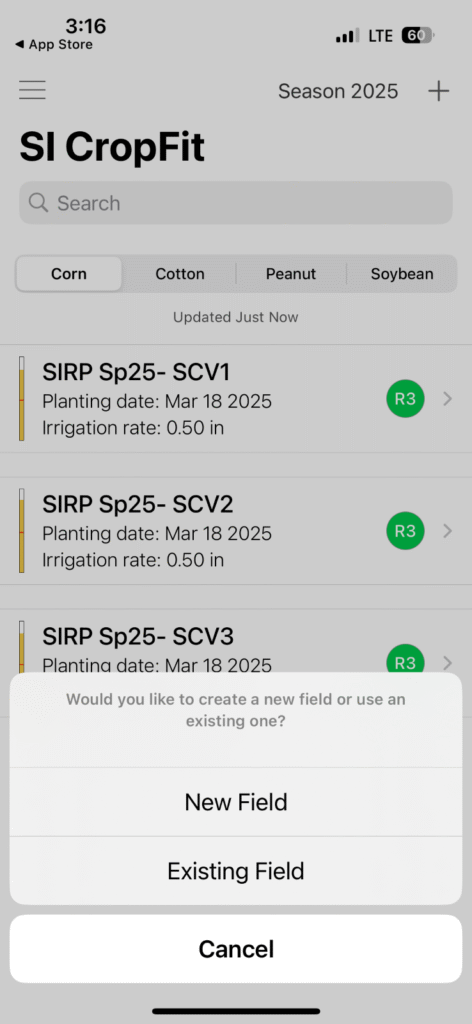
Once installed, open the app and follow the prompts to create your first field. For step-by-step guidance on setting up a field and entering crop and soil details, refer to the images provided. These visuals will walk you through the setup process to get the most accurate irrigation recommendations for your farm.
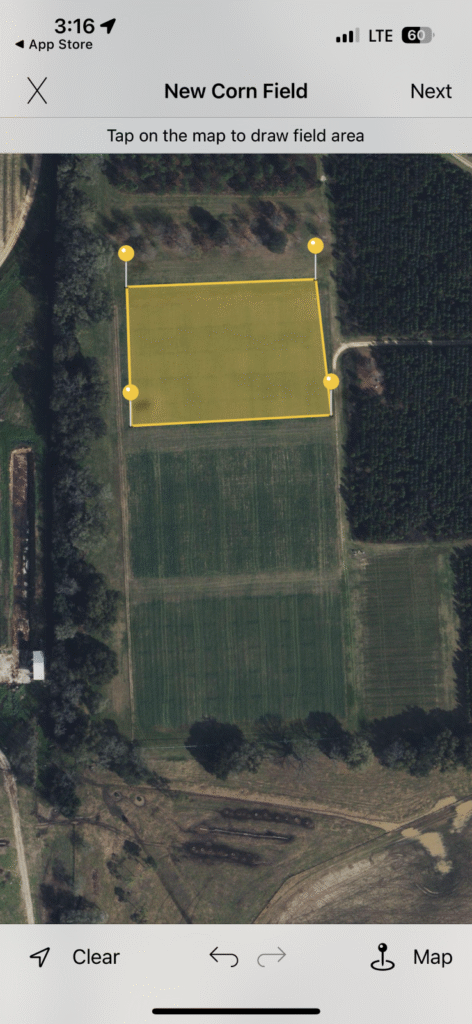
CropFit lets users register multiple fields for each supported crop and even stores data from previous growing seasons. When adding a new field, you’ll define the field boundary by dropping pins on a map. This boundary helps the app automatically pull in soil characteristics from the NRCS Web Soil Survey and identifies the location for retrieving local weather data.
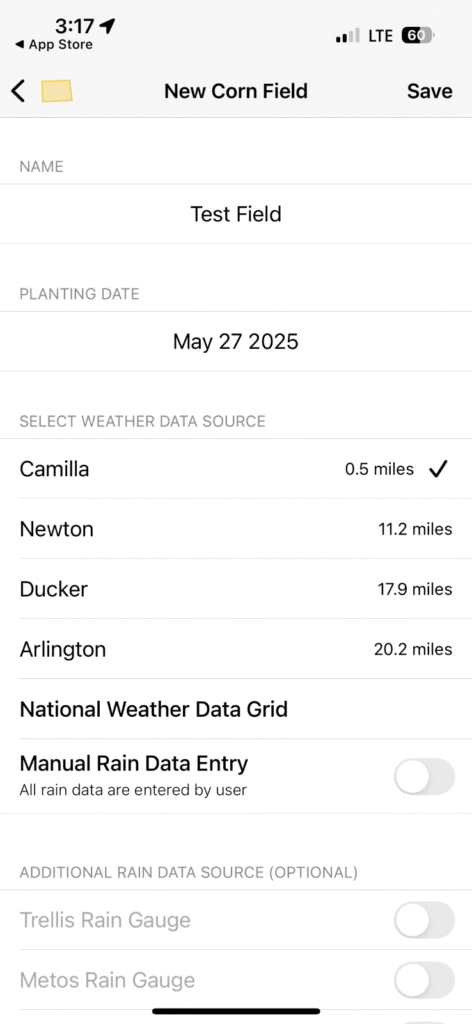
During setup, you’ll also enter a field name, planting date, and have the option to connect to an on-farm rain gauge, if available. At this time the available on-farm gauges are Trellis, Metos, Davis, OnSet, METER, and AgSense. If you have any of these systems, you will be able to log into the data source through CropFit so that it can access the data automatically. The planting date can be entered retroactively, as long as past irrigation events are also added on the correct dates.
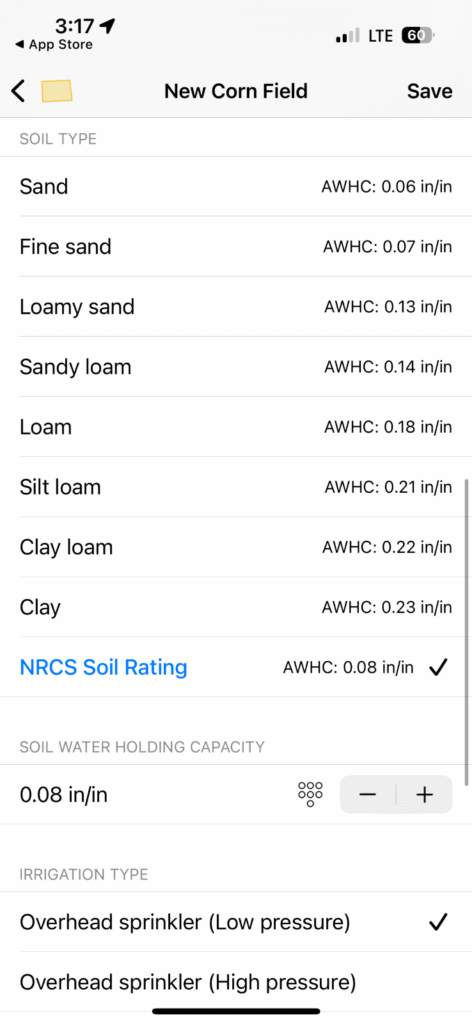
Verify NRCS soil rating, or select your own Available Water Holding Content Value.
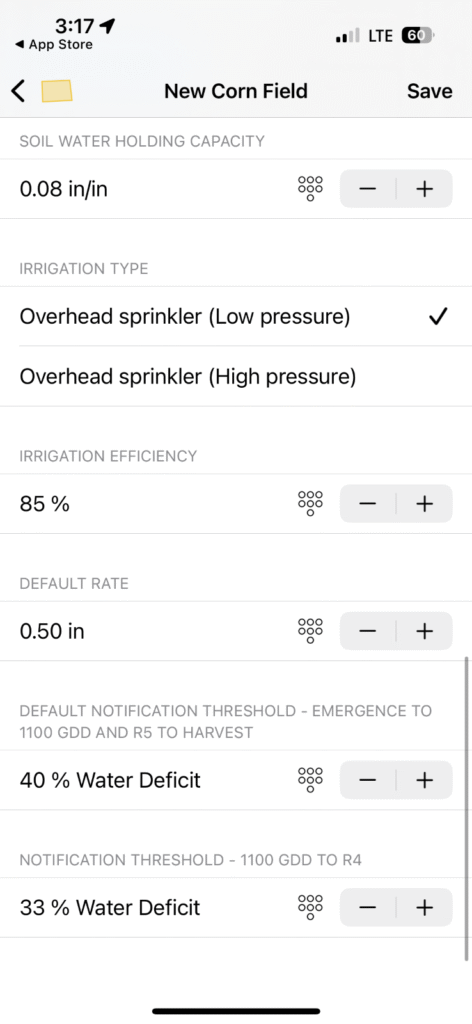
Verify irrigation system type, efficiency, default rate per irrigation event, and preferred soil water deficits (SWD) (can be changed but default values are result of extensive research). If you make a decision to add a different amount of irrigation at any given event you can edit that from the See Details button on the main screen.
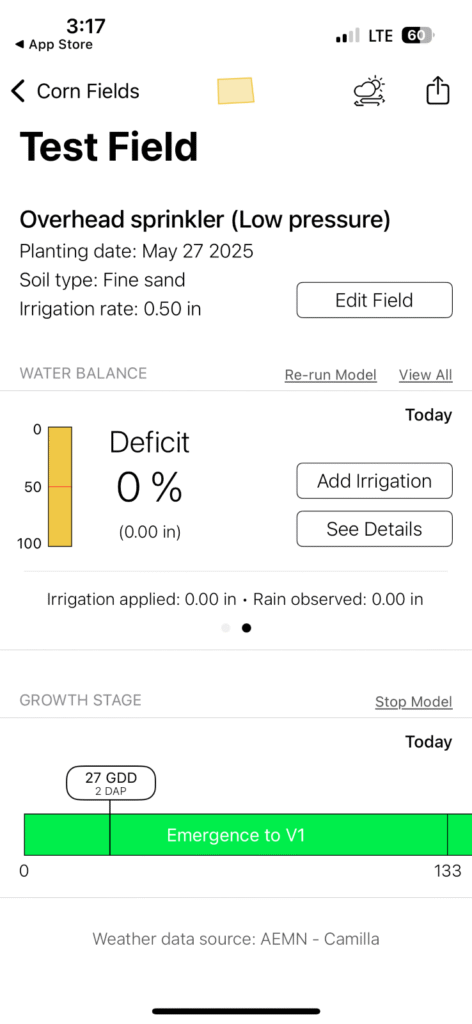
One important note: When a field is first registered, the app assumes the soil profile is at full water capacity (0% deficit). To ensure accurate early-season recommendations and avoid water stress, it’s best to irrigate at planting if soil moisture is uncertain. The good news is that setup takes less than five minutes, and once complete, CropFit is ready to guide your irrigation decisions for the season.
This image to the left showing the field’s current soil water deficit (in % and inches), current estimated growth stage, and any rain observed. To add irrigation to the soil profile in the model, click “add irrigation.”
Once your field is set up in CropFit, the app keeps you informed through daily push notifications. These alerts are typically sent just after 7 a.m. and notify you when your field is nearing its irrigation threshold, when rainfall occurs, or when your crop is entering a new growth stage (such as emergence or flowering).
After initial setup, you’ll only need to open the app occasionally—to log irrigation or update rainfall data. CropFit also allows users to download a comprehensive spreadsheet of their irrigation records and crop progress, which can serve as documentation of advanced irrigation scheduling practices.
CropFit’s performance has been tested extensively, and results show it delivers real benefits. In long-term trials, it consistently outperformed traditional methods like the University of Georgia Extension Checkbook, using 44% less irrigation water on average while increasing cotton yields by 13%.
The best part? CropFit is completely free and available on both Apple and Android devices. To learn more or download the app, visit smartirrigationapps.org.
